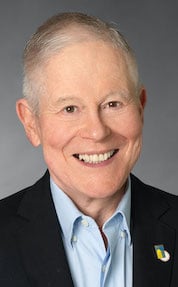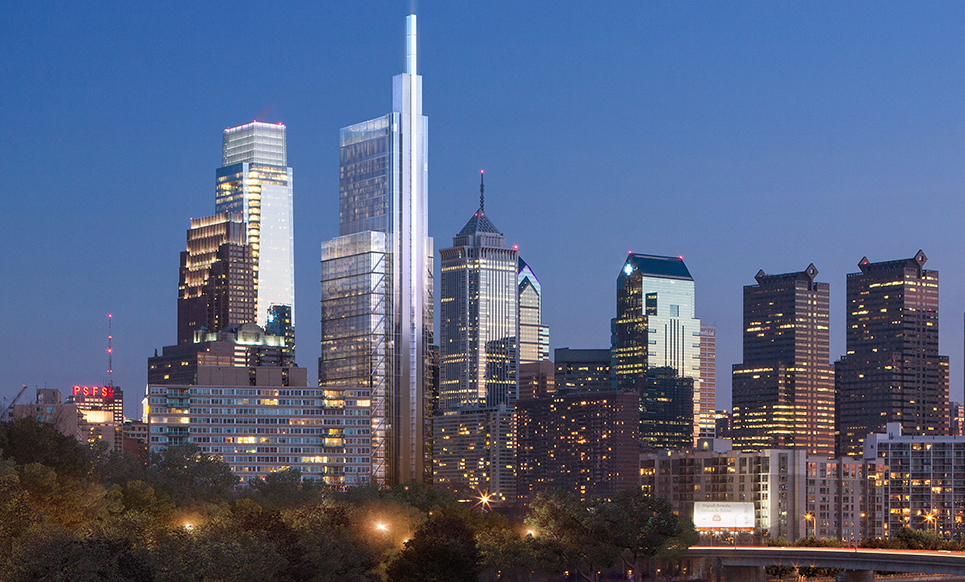23 July 2017
Click here for the latest articles on EB-5 Financing.
This article is an updated version of the one that was originally published on HotelLawBlog.com on 30 July 2014.
Why you do NOT want to form your own regional center
by
Jim Butler, Hotel & EB-5 Finance Lawyer
How should developers pursue EB-5 financing?
Although the EB-5 immigrant visa program has been around since 1990, the current trend of using it as a source of financing for hotel and other real estate started 20 years later – around 2010. We worked on one of the first hotel EB-5 financings for the W Hotel & Residences in Hollywood, and we have since worked on more than 100 EB-5 projects all over the country. Now, the use of EB-5 financing for construction has gone mainstream. High profile EB-5 financing closings include $450 million for the Century Plaza Los Angeles, $100 million for the Ritz Carlton & JW Marriott in downtown Los Angeles, $150 million for the Waldorf Astoria in Beverly Hills, and $1 billion for the Silverstein project at the World Trade Center in New York City (with a Four Seasons Hotel).
As a growing number of savvy hotel developers hurry to assess the EB-5 financing opportunity, they frequently receive conflicting advice as to the best way to pursue EB-5 financing. Many immigration lawyers and advisors tout the advantages of the developer forming its own regional center – basically to shave a few points off the all-in cost of EB-5 financing.
This advice may work well for the EB-5 advisors (in that they may get $100,000 or more in fees) and for certain hotel developers. But for most of the hotel developers we know, forming a captive regional center is a bad idea. This article should provide a note of caution for developers considering this course.
Based on our extensive experience with financing hotel development from EB-5 funding sources, we believe that the answer for most hotel developers will be to obtain “preferred” status for themselves and their projects – if they can do so – and to tap into the very best established EB-5 funding sources. For more on this approach, see “Development financing: How to win the race for EB-5 capital.”
Restricted capacity in channels for accessing EB-5 capital
As hotel developers compete in a very crowded field seeking the finite amount of EB-5 funding available each fiscal year (because there are only 10,000 visas available per year), there is something of a “race” to gain access to the limited resources for tapping EB-5 capital. The restricted capacity is the limited bandwidth of the channels for accessing the pipeline of foreign investors (experienced regional centers and marketing agents). And, increasingly, there are also limits on foreign investors’ interest and ability in the US program due to foreign capital flow restrictions and other countries (such as Canada, Australia and Great Britain) offering competing programs to attract the same investors with fast-track programs to visas and citizenship. The channels for bringing the EB-5 investor money to US developers have simply not been able to keep pace with the demand.
As some indication of the explosive growth straining the existing capacity of the system, 126 visas were issued under EB-5 in 2004 and that number exceeded or pressed against the maximum statutory limit of 10,000 visas in 2014, 2015 and 2016. Most of the interest in the program has manifested itself since 2010.
Explosion of new regional centers – most of which have no fund-raising experience
A regional center is an entity that has received formal approval by the US immigration service (the USCIS) of an application to be designated as such. As of July 3, 2017, approximately 851 regional centers have been approved by the USCIS, but a small percentage of those have ever raised significant EB-5 financing, much less gotten their immigrant investors’ permanent visa approvals through the I-829 process.
Industry experts estimate that more than 85% of the total dollar amount of all EB-5 funding since 1990 has been raised by fewer than (the top) 10% of the regional centers. In other words, there is an extreme concentration of experience and success amongst a very small number of the regional centers.
Why have a virtual handful of regional centers raised such a vast portion of the EB-5 funding? The top regional centers have been established for some time, have a strong infrastructure in both the United States and places where there is already an awareness of the EB-5 program opportunity and strong interest in using EB-5 to migrate to the United States – places such as China and hot new markets such as Vietnam, Korea, Indonesia, Latin America and parts of the Middle East. These established regional centers have built reliable marketing organizations, and have worked out procedures, documentation, and logistics to evaluate new EB-5 projects.
A substantial amount of work is required to underwrite a deal, consummate arrangements with the developer, prepare the project marketing program and materials, sell projects overseas, and get the funds released for deployment by the project. In addition to the transaction work of making deals and raising capital, the regional center must also insure compliance with securities and immigration laws. And above all, the regional center must establish a track record of success in obtaining permanent visas for its EB-5 investors, because the regional center’s ability to raise capital in the future will depend upon being able to establish a high probability of success in getting green cards for its projects based on its prior performance.
A regional center approval from the USCIS is akin to a license to participate in the EB-5 chain of capital raising. It is only the first step in a long and difficult process of establishing a successful capital-raising machine. While status as an approved regional center enables increased job count for projects handled by the center (by counting direct, indirect, and induced jobs), it does not confirm any ability or experience to raise funds. And the strongest regional centers that have successfully closed EB-5 deals have been committed to the business for years. They also have a long line of developers who want to employ their services. These veteran organizations have established (and maintain) a regular operating presence in China and other countries, built a strong and permanent marketing organization in these countries, grown investor demand for their offerings based on their track record of getting visas for investors, and delivered funding on their promises.
Daunting hurdles for new regional centers
Newcomers to EB-5 funding find competition with the established regional centers to be daunting. The EB-5 investors want to know the track record of the regional center marketing a project. What percentage of their investors have gotten their green card? How many have failed? How many have been deported after moving to the US?
The best marketing agents to present projects to investors want to work for the best and most established regional centers. Why should they try to compete with established track records, duplicate organizational structure, and teach someone about the business?
It is difficult to recruit, train and oversee talented marketing agents, particularly in an increasingly regulated environment where the US Securities and Exchange Commission continues to impose new requirements on top of all the complexities of immigration laws.
In short, there are too many regional centers already, and most of them – particularly the new ones – have no organization or proven ability to raise EB-5 financing, much less to do so in a timely, cost-effective or reliable way. Immigrant investors prefer records of success, and so do smart developers.
Warning! Forming a regional center means getting into the immigration business
Many developers are being led to form a regional center because of bad advice. This approach should be selected only by those developers who cannot qualify for the “preferred” status or those who genuinely want to get into the immigration business for other reasons. This path should not be chosen to save a few percentage points in the cost of funds or in the mistaken belief that it is an easy path to follow.
Perhaps an example will help. In the heyday of real estate syndications (selling limited partnership interests to raise capital to buy commercial real estate), syndicators often started raising capital among their family, friends and business associates. But as more deals came, and as the capital recruits acquired grew larger, the syndicators usually ended up going to regional brokerage firms to raise their capital. In one sense, the capital was “expensive.” The cost of using such brokerage firms often ranged up to 8% of the offering proceeds. But the use of professional securities salesmen permitted the syndicators to focus on their core business of identifying great real estate investments, adding them under contract, repositioning them, and managing them profitably.
Maybe one syndicator in 1,000 decided to take over the capital raising function by forming a captive brokerage firm. This was really an entirely different business from the core real estate business of the syndicator. It has unique capital requirements, licensing issues, regulatory compliance, liabilities and costs. Most real estate investors were well advised to stay out of the investment banking/capital raising business.
The same considerations apply to a developer looking at EB-5 financing. If the developer cannot qualify for “preferred” status, to a greater or lesser extent the developer may find itself getting into the immigration business. The developer may form a regional center, or will seek to identify regional centers to rent or otherwise cobble together with marketing agents and other complements of the EB-5 capital raising chain. This is a difficult, time-consuming and somewhat risky course to set unless the developer fully understands the nature of the commitment, effort and capital likely to be required. This is not for the faint of heart.
The developer will be competing with a handful of dominant players who have been established for years. They have spent a vast amount of time and money to build their presence in China (and other countries with a significant demand for EB-5 visas), along with their marketing organization, infrastructure, systems, forms and reputation amongst the EB-5 investor community.
A few final words on developers forming their own regional centers
An extraordinarily high percentage of developers who initially believe they want to build their own EB-5 infrastructure will ultimately abandon their path. Although we can help clients pursue this path with any or all of the steps it takes, developers need to understand this alternative involves setting up an entirely new business – the immigration business. It takes a long time to get regional center and project approvals, and even longer to push projects all the way through the EB-5 pipeline so that you can show new investors that all your prior investors got their green cards.
Most of our clients find that it is far better to connect with and rely upon well-established major players in the EB-5 financing chain. We serve as counselors to assist them through this process.
How to get help evaluating and executing on EB-5 financing.
We have a lot of practical experience in helping our developer clients raise EB-5 funding. If you would like some help to evaluate whether EB-5 could work for you, or what strategy is best for you, then give us a call. There is no cost for an initial discussion.
Jim Butler, +1-310-201-3526 or jbutler@jmbm.com
David Sudeck, +1-310-201-3518 or dsudeck@jmbm.com
For more information about EB-5 financing, including the latest updates, go to www.HotelLawBlog.com, scroll down the right-hand side under LEARN MORE ABOUT and click on “EB-5 Financing” where you will find all the articles on the subject.
For your convenience, here are a few popular EB-5 articles that may be of interest:
EB-5 extended without change: President Donald Trump signs bill
FAQs: Essentials of EB-5 construction financing for developers
EB-5 construction financing term sheet for top developers
More than $1.5 billion of EB-5 construction financing closed for JMBM clients
Are hotels still the darling of EB-5 financing?
The 5 questions every developer is asking about EB-5 financing
Tips to avoid the 6 most common mistakes developers make with EB-5
This is Jim Butler, author of www.HotelLawBlog.com and hotel lawyer, signing off. Please contact us if you would like to discuss any issues that affect your hotel interests or see how our experience might help you create value and avoid unnecessary pitfalls. Who’s your hotel lawyer?
 Jim Butler is a founder of the JMBM law firm and chairman of its Real Estate Department. He founded and chairs the Firm’s Global Hospitality Group® and its EB-5 Finance Group which provide business and legal advice to owners, developers and investors of commercial real estate, particularly hotels, resorts, restaurants, spas and senior living. This advice covers purchase, sale, development, financing, franchise, management, labor & employment, litigation, ADA, IP, and EB-5 matters for such properties.
Jim Butler is a founder of the JMBM law firm and chairman of its Real Estate Department. He founded and chairs the Firm’s Global Hospitality Group® and its EB-5 Finance Group which provide business and legal advice to owners, developers and investors of commercial real estate, particularly hotels, resorts, restaurants, spas and senior living. This advice covers purchase, sale, development, financing, franchise, management, labor & employment, litigation, ADA, IP, and EB-5 matters for such properties.
Jim is recognized as one of the top hotel lawyers in the world and has led the Global Hospitality Group® in more than $87 billion of hotel transactions and more than 3,900 hotel properties located around the globe. They have helped clients with more than 1,000 hotel management agreements, 1,000 hotel franchise agreements and more than 100 hotel mixed-use projects.
JMBM’s EB-5 Finance Group has advised on more than 100 EB-5 projects, closed more than $1.5 billion of EB-5 financing, and sourced more than half of that for our clients. EB-5 Investors Magazine named Jim one of the top 25 EB-5 lawyers in the United States, and Jim serves on the Public Policy Committee of the IIUSA, the EB-5 industry’s trade group for regional centers.
Contact Jim at +1-310-201-3526 or JButler@jmbm.com
Hotels we have worked on over the years. Visit our hotel photo gallery to see some of the more than 3,900 properties around the globe that the hotel lawyers of the Global Hospitality Group® have been involved with, on behalf of our clients. For a more comprehensive list of hotels properties and projects we have worked on, see our Credentials.





 Proposed $1.2 billion, 59-story Comcast Center with Four Seasons Hotel in Philadelphia, PA.
Proposed $1.2 billion, 59-story Comcast Center with Four Seasons Hotel in Philadelphia, PA.